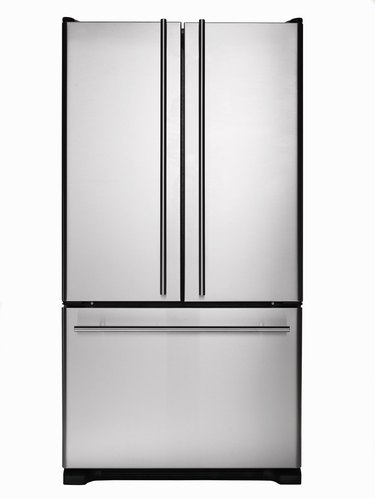
A refrigerator is one of the hardest working appliances in the home. There are many parts inside the box that must work together smoothly in order to keep the inside air at the desired temperature. The overload protector is a small piece that provides a valuable service for any appliance that uses a compressor, such as a refrigerator or air conditioner.
The Compressor
Video of the Day
When people hear the refrigerator working, what they are hearing is the motor powering the compressor. This critically important part starts the cycle of refrigeration by doing just what its name states -- it compresses the coolant into a smaller volume. Otherwise known as a vapor pump, the compressor then sends the coolant out the discharge line and to the condenser.
Video of the Day
Overload Protector Job
The compressor is normally near the rear floor of the refrigerator. As it does its job, it generates a great deal of heat. The overload protector sits near the condenser by the current start relay and ensures the condenser does not overheat while working. If the overload protector senses that the compressor is approaching failure from overheating, it will temporarily shut the compressor down to allow it to cool.
Location
The electrical wires that provide power to the parts of the refrigerator all run from the junction box at the rear. This is easy to access but should only be done with the unit unplugged from the wall. The lid is usually held on with a clip that is popped off with a screwdriver. The overload protector has a wire running from it directly to the compressor, which makes it easy to identify.
Replacement
Replacing the overload protector takes only a few minutes and can be done by the homeowner. Pull the wires that clip onto the piece away from the protector. Do not pull on the wire itself, but on the attachment clip with a needle nose pliers. Push the spring clip that holds the piece in to the side with a screwdriver and insert the new overload protector. Replace the wires into their clips and the new unit is ready to go.